Is There a Weight Limit to Skydive?
Tandem Skydiving
Posted by: Skydive Palm Beach
7 months ago
Have you ever dreamed of skydiving, feeling the rush of wind as you freefall, only to pause and wonder: What is the weight restriction for skydiving? You’re not alone. While there is no minimum weight requirement for skydiving, there is a maximum weight for skydiving. Most skydiving facilities impose weight restrictions typically ranging from 200 to 250 pounds for their tandem passengers. But these numbers aren’t intended to exclude or shame, they’re to comply with safety requirements and to ensure a comfortable experience for every participant. Let’s strap in and delve more heavily into why there is a weight limit for tandem skydiving.
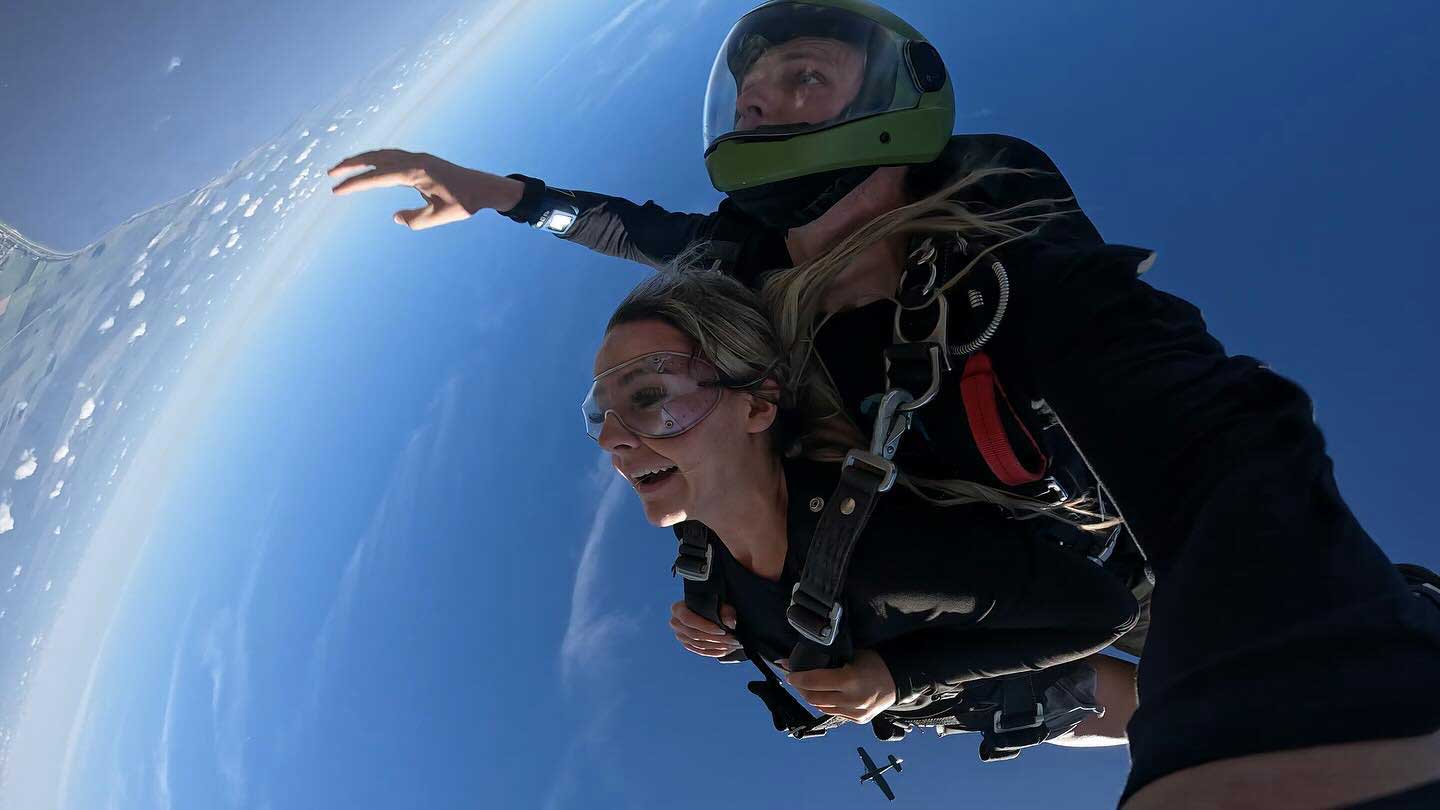
Trusting Your Gear
Imagine stepping to the edge of an airplane, ready to dive into the blue. The trust you place in your gear is immense, but rest assured, the equipment used in skydiving undergoes rigorous testing. Every skydiving container, or rig, must comply with the Federal Aviation Administration (FAA) standards, including the Technical Standard Order (TSO). This authorization ensures the equipment meets minimum performance standards, and plays a crucial role when it comes to determining the weight limit on skydiving gear.
Consider this: most tandem skydiving rigs are cleared for a combined weight of 500 pounds. This cap includes not just you and your instructor, but also the approximately 60 pounds of gear you’ll be wearing. This limit is not just about meeting safety standards; it’s about ensuring the equipment operates within its tested parameters. Skydiving facilities set their weight limits to maintain compliance with these regulations.
In addition, a properly fitting harness is essential for passenger comfort and is often dependent on height-to-weight proportions. Besides comfort, a well-fitted harness is vital for optimal performance during the jump.
When we look at the TSO authorization, it may seem feasible to pair a lighter instructor with a heavier tandem passenger. Let’s look at a frequently asked question: Can you skydive if you weigh 300 pounds? Doing the math, we have a 300 pound student and 60 pounds of equipment, leaving room for only a 140-pound instructor before hitting the 500-pound limit. But skydiving is more complex than just matching weights.
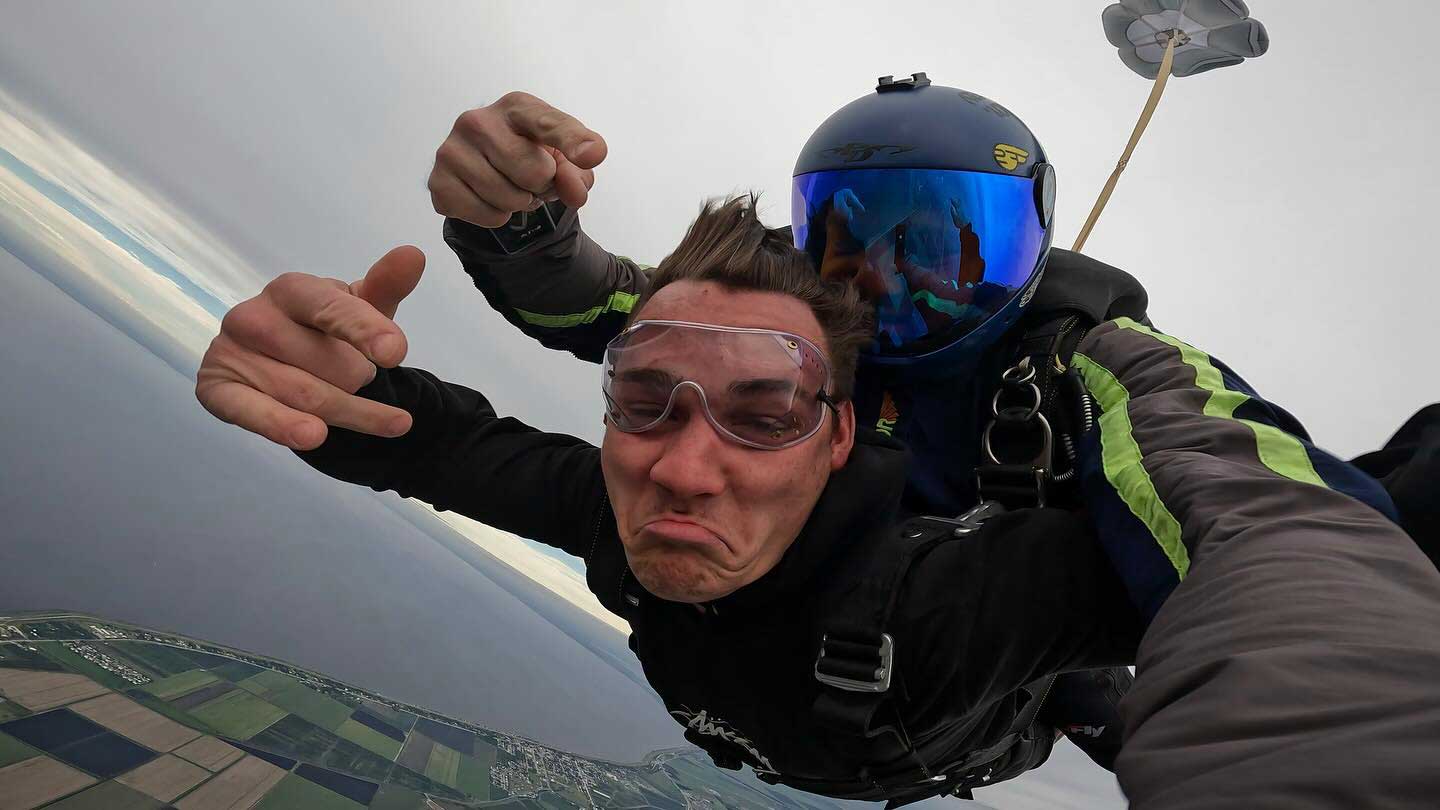
Performance & Safety: Understanding Weight’s Role
When it comes to skydiving, the performance of both the parachute and the tandem team is crucial. Here’s why weight plays a significant role.
Stability & Control
In freefall, the combined weight of the tandem pair affects their aerodynamics. A heavier weight increases the fall speed, demanding precise adjustments from the instructor to maintain stability and ensure a smooth deployment of the parachute.
Parachute Deployment
The force of deployment can be more intense for tandem pairs close to the weight limit. This is because the parachute has to counteract a greater momentum to slow down the descent safely. It’s a delicate balance that requires equipment and expertise to be aligned perfectly.
Landing Dynamics
The approach and landing phase of a skydive are significantly influenced by the tandem pair’s weight. A heavier team may experience a faster descent and require more skill from the instructor to execute a safe landing. A smaller instructor may not have the strength or stamina to do this. And the ones who do are risking extra wear and tear on their body. To mitigate risk and ensure safety, some instructors have their own weight limits separate from, and less than, those set by the dropzone.
Understanding these dynamics showcases the critical balance between weight, equipment capability, and instructor expertise. It’s all about ensuring a thrilling yet safe jump from start to finish – for tandem student and tandem instructor.
Aircraft
When it comes to skydiving, the type and size of aircraft are not just logistical details – they are integral to ensuring the safety and feasibility of the jump. The aircraft used for skydiving can vary widely, from Cessna planes to larger turbine aircraft like the Twin Otter. The type and size of aircraft also dictates skydiving weight limits.
One of the primary concerns with any aircraft is maintaining proper weight and balance. This is crucial for the pilot to control the aircraft effectively. Pilots and skydiving operators must carefully calculate the weight of jumpers, equipment, fuel, and the pilot themselves to ensure the aircraft remains within safe operational parameters.
The physical space inside the aircraft also plays a significant role in determining how many jumpers can fit in the plane and the total allowable weight.
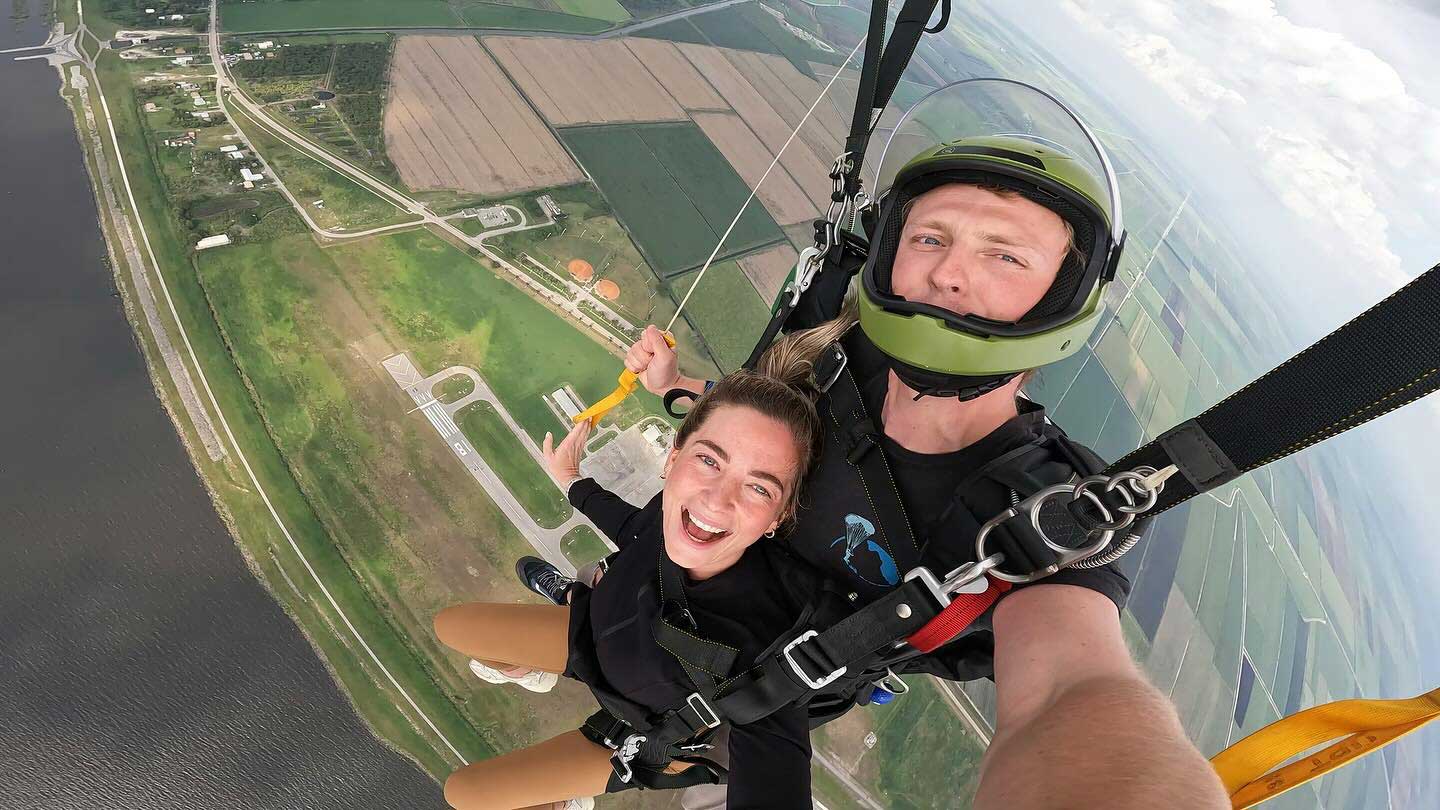
What Is The Heaviest Weight To Go Skydiving?
So, what is the maximum weight for skydiving? It differs from one dropzone to another. At Skydive Palm Beach, we can accommodate passengers who weigh up to 240 pounds. Individuals who weigh 200 pounds or more are assessed a fee of $1 per pound. These additional fees are not meant to discriminate, but rather to compensate instructors for the extra work required of them.
This brings us to another frequently asked question: Do they weigh you before skydiving? Yes, most facilities will weigh you upon arrival. This is to ensure compliance with the tandem parachute’s weight limit, to assist in pairing you with the appropriate instructor, and to help with planning seating arrangements on the aircraft, etc.
Wondering if you can skydive if you are overweight? Unfortunately, you cannot skydive at a particular facility if you are over their stated weight limit. The skydiving community is known for its inclusivity, and we strive to make everyone feel welcome. But, above all else: safety. Always.
While weight is an essential consideration, overall health and general fitness are crucial too. You must be able to maneuver around in the aircraft, hold the correct body position in freefall (the “skydiving arch”), and lift your legs for a period of time for landing. If you have any medical concerns or pre-existing conditions, consult with your healthcare provider before booking your jump. Inform the skydiving center, too, so they can plan accordingly.
Ready to Soar?
Embarking on a skydiving journey is an exhilarating decision. Knowing about weight limits and how they impact a skydive prepares you for a safer, more enjoyable experience. Have questions or need advice on preparing for your skydive? Get in touch – we’re here for you!
Adventure awaits, and with proper preparation, the sky is indeed your playground! Whenever you’re ready, book your jump! We can’t wait to help you soar. Blue skies!
Categories:
You May Be Interested In:
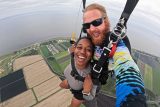
What It Takes to Become a Tandem Parachute Jump Instructor
3 weeks ago by Skydive Palm Beach

How Fast Do Tandem Skydivers Fall?
2 months ago by Skydive Palm Beach
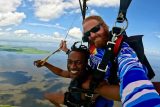
Why Tandem Skydiving is Perfect for First-Time Jumpers
3 months ago by Skydive Palm Beach

How Long Does it Take to Skydive?
5 months ago by Skydive Palm Beach
